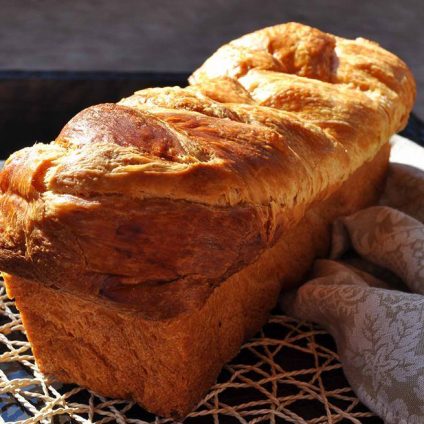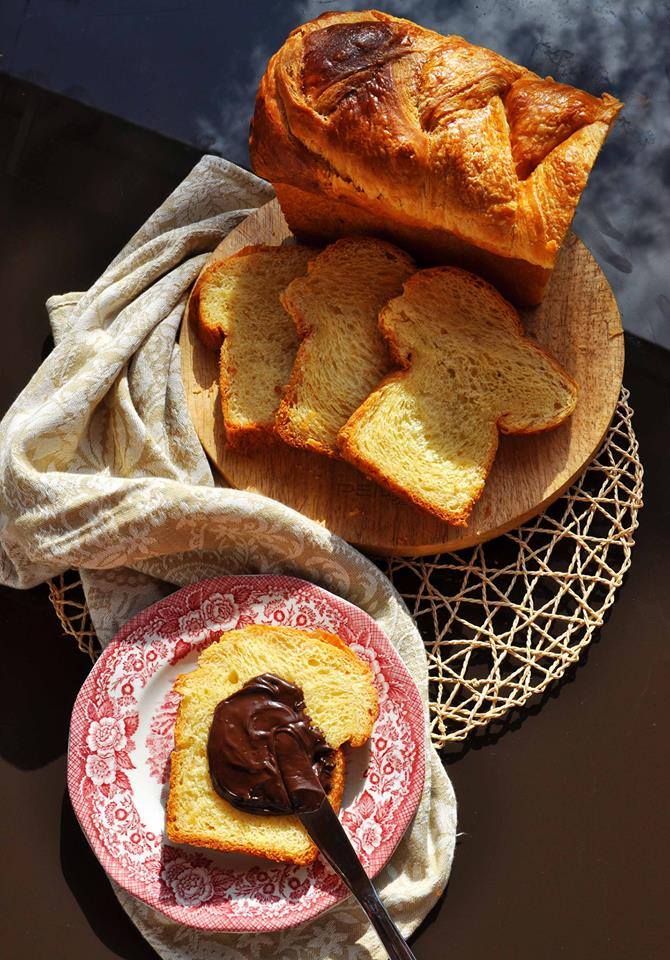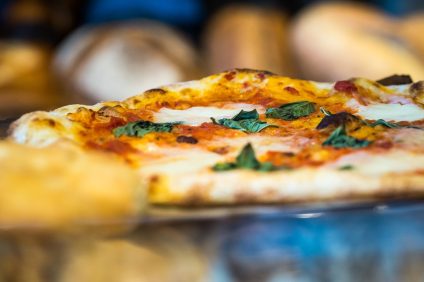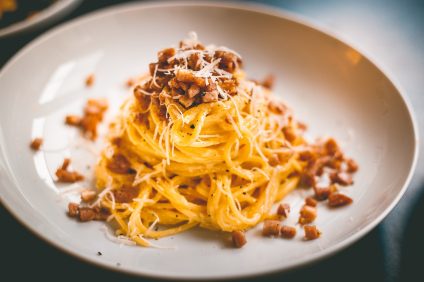Pancroissants
Elena Raymond

Time of realization: 2 hours + 18 hours rising
Degree of difficulty (from 1 to 5): 3
Ingredients
Yeast with mother yeast
45 g of refreshed solid sourdough (hydro 50%) or or 30 g li.co.li. refreshed (in this case add 15 g of flour)
75 g of water
135 g of 0 flour
Yeast with brewer's yeast
15 g of fresh brewer's yeast or 10 g of dry brewer's yeast
100 g of water
150 g of 0 flour
Final dough
All the leavening
360 g of 0 flour
100 g of refreshed solid sourdough yeast or 70 g refreshed liquor (in this case increase the flour by 35 g) or 10 g of fresh brewer's yeast or 7 g of dry brewer's yeast
145 g of milk
2 medium eggs (about 80 gr weighed without shell)
60 g of sugar
10 g salt
40 g of softened butter
250 g of butter for puff pastry
egg to brush
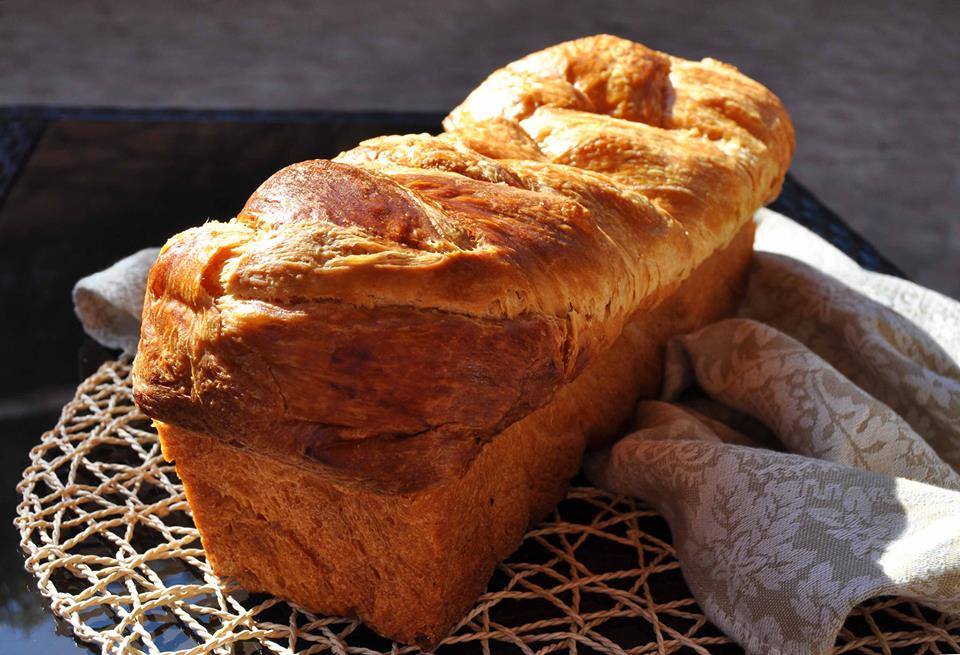
Procedure:
Yeast
Prepare the leaven and let it rise at room temperature for 12 hours (in the case of hot weather or halve the time or put it in the fridge overnight and the next morning let it double at room temperature when the leaven is ready)
Dough
Prepare the leavening the day before as above. Sift the flours and add the sugar, dissolve the yeast in the milk, if you use the brewer's yeast, use warm water, add the yeast and the yeast to all the flour and knead until all the milk is absorbed. Once you have a compact dough, add the eggs adding them one at a time and the salt, work the dough well, I used a mixer so I worked the dough for at least 10 minutes, if you work it by hand it must be nice smooth and firm , finally add the softened cold butter and ointment a little at a time, work very well until the dough is strung in order to make it shiny and smooth. Leave it in the bowl so that the leavening starts let it rest for at least 1 hour.
After the hour, form a dough, place it in an oiled bowl and cover it with cling film, let it rise until doubled, if you like you can also let it mature in the fridge one night, I let it rise at a temperature of about 28 ° C ( in the oven with the light on) for about 3-4 hours.
If you make it mature in the fridge the next morning, let it acclimate for a couple of hours, so that the leavening starts again, before moving on to the next phases.
Prepare the stick of butter that you will need for the peeling, the butter must be removed from the fridge at least a couple of hours before this operation otherwise it will be difficult to work, you must create a rectangle about 30 × 20 cm in size, you will have to crush it between 2 sheets of baking paper, to be more precise, draw the rectangle on the same paper.
It is very important to make sure that the butter before using it for flaking has a temperature of 15 ° C. To the touch it must be firm but soft therefore malleable and workable. Pick up the dough. Lightly flour the pastry board and roll out the dough which must have a temperature of 4 ° C
Crush it with a rolling pin and form the rectangle with the help of and modeling it with your hands.
When finished, place it in the fridge to cool
An important precaution, when you start rolling out the dough after the butter has been recessed and the subsequent folds, is the position of the dough for spreading, it must be facing you so that it can be rolled out in height, another important step and not to be underestimated is to start the drafting, after having collected the butter, avoiding rolling the rolling pin over the dough because in this way you will risk dragging the butter up or down, you will have to use the rolling pin to press on the dough that will crush the dough and at the same time roll it out, in this way the butter will be distributed well throughout the dough, after this first but very important operation you can proceed to roll out with a rolling pin as usual.
Fixed
At this point we move on to the folds, we will make a 4 fold and three 3 folds.
This series of folds have the purpose of making the dough uniform by overlapping dough and butter in many thin layers. The 1st fold, 4 fold, is to be done only once.
1. Flour the pastry board again and roll out the dough lengthwise until it reaches a thickness of 1 cm.
2. Fold a flap of the dough up to the first third of the rectangle.
3. Take the other flap and bring it to the first and finally fold it back into a book. You will get a rectangle again.
4. Rotate the dough (a quarter of a turn) so that the short side is facing you and the back of the folds to the left.
- Cover the dough with cling film.
- Leave to rest for 30 minutes in the refrigerator. The 2nd, 3rd and 4th folds you will have to make 3 folds to be carried out twice with the break always 30 minutes in the fridge
1. Flour the pastry board again and roll out the dough lengthwise until it reaches a thickness of 1 cm.
2. Fold a flap of the dough up to the middle of the rectangle.
3. Take the other flap and fold it over the other two. You will get a rectangle again.
4. Rotate the dough (a quarter of a turn) so that the short side is facing you and the back of the folds to the left.
- Cover the dough with cling film.
- Leave to rest for 30 minutes in the refrigerator.
After the last fold without resting in the fridge go directly to the drafting and shaping of the pancroissant. Roll it out on a freshly floured pastry board lengthwise until you get a rectangle of about 30 × 60 - 70 cm with a thickness of about 7-8 mm.
You will cut this rectangle into 6 strips of about 10-12 cm x 30. Every three strips you will form a braid, iron the strips a little and proceed with the intertwining.
Make the two braids, place them to rise in the greased and floured mold.
I advise you to use a nice high and wide mold, I used a 30 × 10 mold but I realized that the braid has developed a lot and to ensure a nice alveolation I think the ideal can be either a mold of at least 20 cm wide or even why not make a crown to be placed in a donut mold.
Cover with plastic wrap, I used an identical mold, always buttered and floured, put on a lid in order to give the braid the possibility to rise freely and I did well because it literally exploded 🙂
Brush with beaten egg and bake in a preheated oven at 200 ° C for the first 10 minutes and at 180 ° C for about 30-35 minutes.
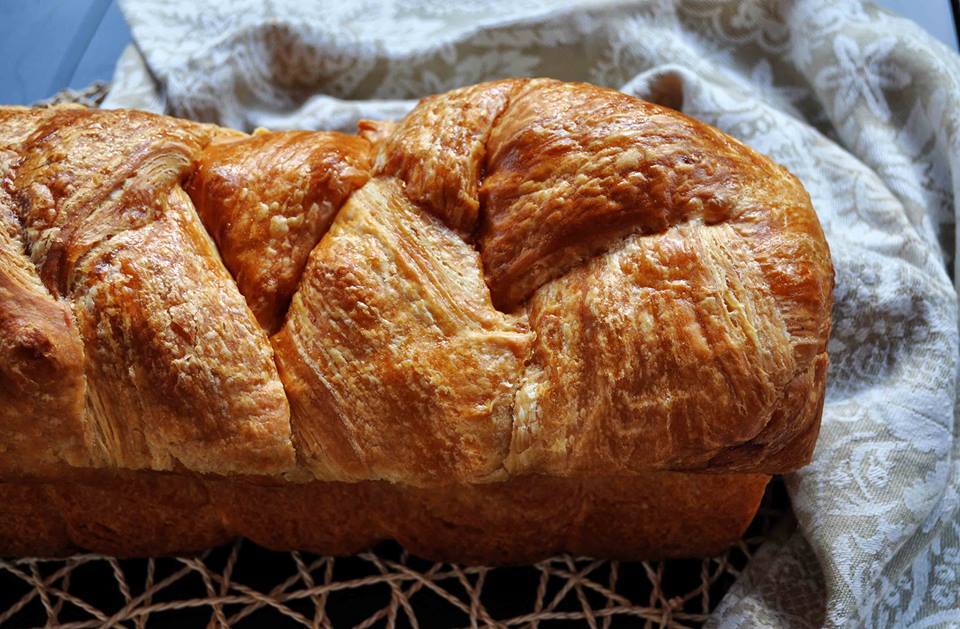
To prevent it from becoming too colored, I recommend that you cover it with aluminum foil.
When cooked, remove from the oven and leave to cool on a wire rack.
